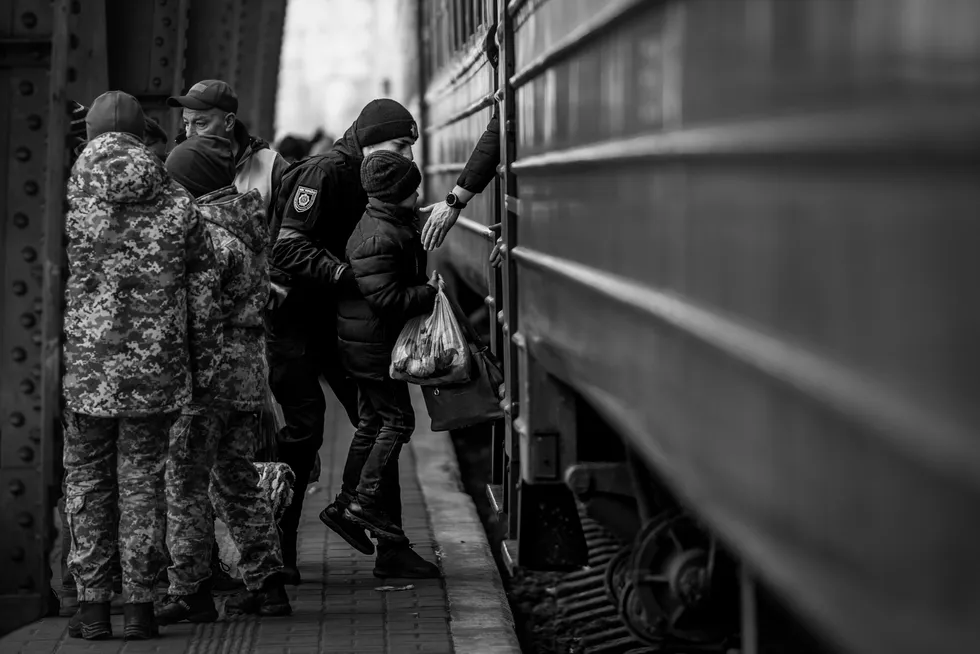
Note: The following article was originally uploaded as an assignment for James Cook University – LA4012: Public International Law. It was uploaded in 2022.
Topic 4:
Many people question whether international law can successfully regulate warfare. Critically assess the ability of International Humanitarian Law (IHL) (or Law of Armed Conflict, as it is also known) to regulate warfare.
I INTRODUCTION
The Law of Armed Conflict (LOAC) remains crucial in regulating the conduct of belligerent parties in modern warfare. The efficacy of LOAC’s enforcement is shown through third-party pressure and the legal mechanisms of the International Criminal Court (ICC), as well as ad-hoc military tribunals established under the auspices of the United Nations. This highlights the power of LOAC to address ongoing conflict and set binding precedent that acts as a deterrent for potential violators.
This essay assesses the nature of the law of armed conflict and the efficacy of its enforcement in successfully regulating warfare. This essay first examines the definition and make up of international humanitarian law with an overview of the 1949 Geneva Conventions (GCs) and its Additional Protocols (AP1, AP2 and AP3). Next, the essay sets out the limitations of the Law of Armed Conflict including critiques ranging from lack of enforcement to perceived bias in enforcement before finally looking at the strengths of the efficacy of international humanitarian law in regulating conflict.
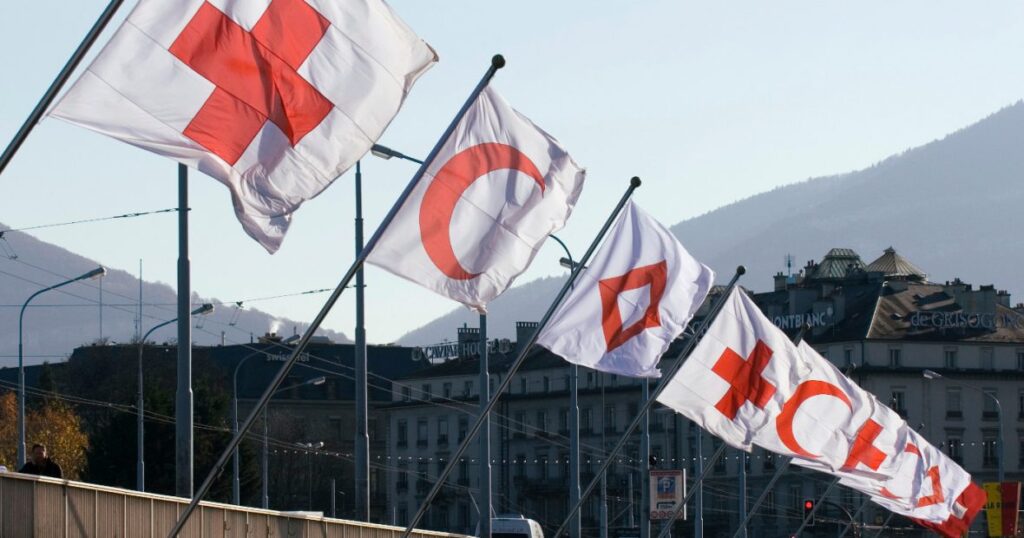
II THE LAW OF ARMED CONFLICT
A Defining terms
Public international law is the body of legal rules and principles that govern the behaviour of states and international bodies towards one another, including the actions of persons, groups and corporations in that space.[1] International Humanitarian Law (otherwise known as the Law of Armed Conflict) or jus in bello is a subsect of public international law that regulates the conduct of warfare once hostilities arise. The Law of Armed Conflict (LOAC) imposes rights and legal obligations on all belligerent parties to a conflict that range from how non-combatants, civilians, sick and wounded, and prisoners are to be treated to how parties are to act during a conflict.[2] The sources of LOAC are found in the 1949 Geneva Conventions and its Additional Protocols.
B The Heart of International Humanitarian Law
The foundation of LOAC is contained in the 1949 GCs and their Additional Protocols. Authored originally in 1864 by Swiss humanitarian Jean-Henri Dunant in response to the carnage of the battle of Solferino,[3] the first Geneva Convention and its subsequent additions aimed at curtailing the destructive capacity of warfare and provide safety for civilians including those who cannot fight anymore.[4] There are 194 signatory states that are bound to the convention at the time of writing.[5] Each convention sets out different parameters that parties are to be aware of and follow.
The first GC sets out protections for the sick and wounded in combat, ensuring that these individuals are entitled to medical assistance and that medical workers along with religious parties are allowed to operate unabetted.[6] The second GC mimics the first GC, but applies to those at sea, notably those impacted during naval warfare.[7] The third GC provides protections to prisoners of war, outlining the treatment afforded to prisoners and the conditions of their captivity.[8] The final GC applies to civilians and the protections afforded to non-combatants during conflict including protections for specific locations such as hospitals.[9]
The scope of these GCs covers conflicts between states (interstate) and with the three Additional Protocols, include intrastate conflicts. The first AP1 regulates the protection of victims of international conflict and contains prohibitions against the targeting of vital infrastructure including dangerous targets such as nuclear power plants, as well as the treatment of the dead and their artefacts.[10] The second AP2 provides protections for individuals affected by non-international conflict such as intrastate conflict.[11] The final AP3 focuses on emblems employed in the conduct of humanitarian assistance, noting the addition of the “red crystal” as a marker for identification.[12] Not every signatory of the original GCs has signed on to the Additional Protocols.
C The Issue
The legal principles governing the GCs and its Additional Protocols are robust and regulate a wide array of conduct in warfare, whether it is intrastate or interstate in nature. These governing principles are accompanied by a series of conventions that concern the role of children in conflict,[13] prohibit certain weaponry and protect goods and peoples.[14]
However, the regulation of warfare in the last century exposes the limitations of LOAC in managing conflict and limiting massacres. Concerns arise from a lack of enforceability, perceived bias in enforcement and the amnesty provided to perpetrators of these acts. These concerns are central to modern discourse surrounding the efficacy of international humanitarian conflict in mitigating the carnage of war.[15]
The following sections in this essay outline some of the limitations of the LOAC in regulating warfare and the strengths that support its efficacy.
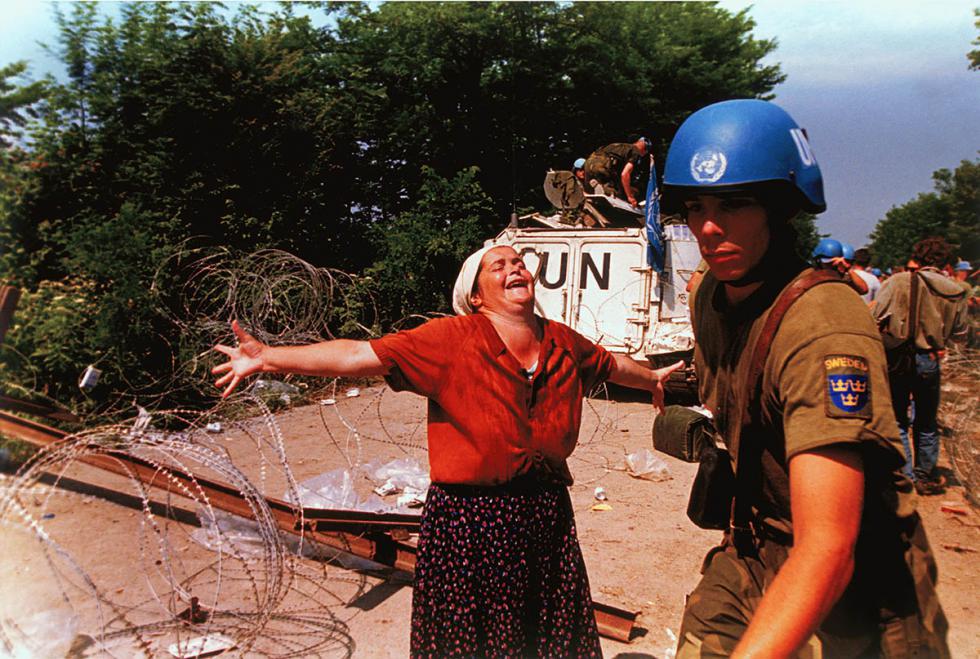
III THE LIMITATIONS OF LOAC
A Lack of enforcement during active conflict
A central focus of critique for the efficacy of the Law of Armed Conflict in its ability to regulate warfare is its lack of enforcement during active conflict. Belligerents are either unable, unwilling or are too slow to prevent violations of LOAC from occurring. This inability to prevent atrocities from happening is a common critique levelled from the public that contributes to cynicism and pessimism surrounding LOAC.[16] There are plenty of examples of failures to prevent atrocities from occurring in history during war, but the example of Srebrenica genocide will suffice to exemplify the point.
- Srebrenica Genocide
The Bosnian conflict of the 1990s saw repeated violations of LOAC. Hundreds of thousands of people of different ethnicities fled their homes or were forcefully displaced by belligerents.[17] Over ninety thousand people lost their lives in bombardments, extrajudicial killings and other acts of violence throughout the conflict.[18] One event that led to the deaths of five thousand Muslim Bosniak men and boys was the Srebrenica genocide. The genocide was perpetrated by the Scorpion paramilitary fighters and army of Srpska acting under the auspices of the breakaway Republic of Srpska.[19]
The genocide took place after thousands of Muslim Bosniaks fled their homes to seek safety in the United Nations (UN) Safe area of Srebrenica in 1995.[20] Poorly supplied, understaffed and outnumbered by internally displaced persons, thousands could not get the adequate support and assistance that they required. The Dutch garrison of peace corps forces stationed in Srebrenica repeatedly requested assistance from the UN and North Atlantic Treaty Organisation (NATO). These pleas for assistance came in the face of repeated concerns from locals of violations of LOAC, war crimes and crimes against humanity being perpetrated by Serbian ultranationalist forces.[21]
The inability of the Dutch garrison to prevent Serbian ultranationalist forces from entering the safe zone led to genocide.[22] This inaction on the part of enforcement mechanisms to prevent violations of LOAC highlight the limitations of enforceability.
B Perceived bias in enforcement
Another critique of the efficacy of the LOAC in regulating warfare is the perceived bias in the administration of enforcement. A criticism that comes from states not part of the “West” (anglosphere and western hemisphere) such as Russia is the claim that the enforcement of the rules-based order is biased towards certain states. This argument is based on the notion that multilateral mechanisms such as the United Nations are created for the establishment of “Western interests”. Violations committed by “non-western states” receive condemnation at these international bodies, while similar violations committed by “western”, or “western friendly” states are ignored.[23] One example pointed out by these states is the protection of the state of Israel.
i. Israel
The state of Israel’s actions against the Palestinian people in occupied West Bank and Gaza are argued by some legal scholars to violate the legal principles of international Humanitarian law.[24] For example: the killing of civilians in Gaza during an Israeli Defence Force operation in 2018 motivated the action of Kuwait to bring a UN security council draft resolution to condemn Israel’s actions. The resolution was supported by other states on the Security Council but Vetoed by the United States.[25] This US Veto on behalf of an ally like Israel is brought as an argument that highlights perceived bias in enforceability, as the enforcement mechanism might condemn one state for similar actions but not another–highlighting double standards.
C Amnesty and Death
A final consideration in questioning the efficacy of the Law of Armed Conflict in regulating warfare is the prospect of amnesty for violators and the failure to apprehend those guilty before death. This consideration is noted last as it amplifies the reality that even if a violator of an atrocity is apprehended, put on trial and sentenced, there is no guarantee that justice will be delivered. External factors and third-party bodies might provide amnesty to perpetrators or worse still a perpetrator dies before reaching a trial.[26] In the case of the latter the example of Slobodan Milošević death will highlight this.
i. Slobodan Milošević
The trial of the former president of Yugoslavia, Slobodan Milošević signalled a triumphant moment for the international community. A Serbian ultranationalist and responsible for violations of international law, Slobodan was ousted in 2000 following the NATO intervention into Kosovo–a country that Slobodan aimed to control and where he was engaged in ethnic cleansing against its Albanian Kosovar population.[27] Slobodan was extradited to face trial at the International Criminal Tribunal of the Former Yugoslavia (ICTY) but died during the trial process and before its conclusion due to a heart attack in 2006.[28]
There are more critiques that exemplify the limitations of the LOAC in regulating warfare, but these are the most critical ones. Now that these points are raised there is a need to argue for the affirmative case–the case in support of the thesis. The following section aims to do just that by outlining two strong driving forces for the efficacy of LOAC in the regulation of warfare.
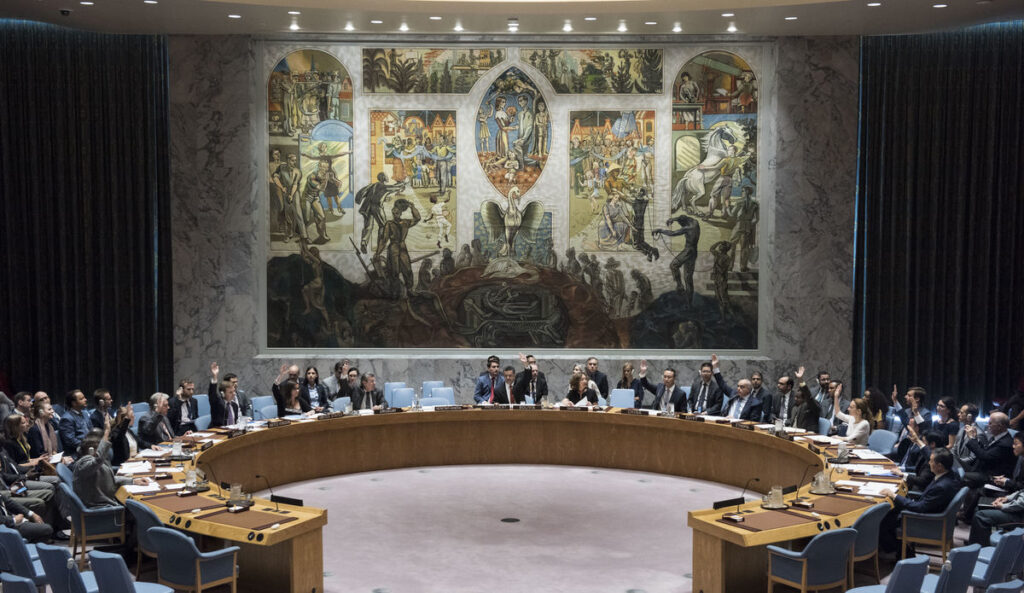
IV LOAC IN ACTION
A Enforcement through Pressure
One of the primary mechanisms for the enforcement of the Law of Armed Conflict in regulating warfare is the use of third-party coercion and intergovernmental organisations.
i Third Party coercion
Third party coercion refers to the power and influence that nation-state actors can project to make a combatant state or non-state actor do what is required.[29] The function of democratic third-party nation-states in the enforcement of the law of armed conflict comes in positive inducements and negative sanctions to influence a state’s behaviour.[30] International coercion by state actors that are both willing and that seize the opportunity to do can affect the behaviour of a combatant state by pressuring the combatant state into compliance with legal norms.[31]
The application of this is done by third parties to a conflict influencing imposing regulations on the conduct of belligerents with either threats of use of force via military means or economic targeted sanctions.[32] Similarly, positive inducements via cooperative agreements with belligerent parties, economic trade or some other net advantage to the state actor can incentivise behavioural changes.[33] Take the example of the incorporation of LOAC principles to modern military doctrine.
- Modern military doctrine
States that are signatories to the Geneva Conventions and their Additional protocols will include the principles of necessity, proportionality and distinction in their field manuals affect the way military activity is conducted. Democratic nation states are especially prone to following LOAC principles on the battlefield and generally avoid inflicting harm on civilians if possible. There is the constant threat of not just domestic legal ramifications for violations but also third-party coercive pressure that costs a nation-state both prestige internationally and alliances locally.[34] This is clear in modern cases such as in the war in Ukraine, where the Ukrainian military incorporates LOAC principles in their field manuals in the conduct of war while third-party nation states such as the United States provide military weaponry as a positive inducement, while imposing economic targeted sanctions on Russia as a negative consequence.[35]
ii Intergovernmental Organisations
Intergovernmental organisations provide a legal watchdog on the conduct of belligerents during commission of hostilities. IGOs such as the UN and NATO provide authoritative mechanisms that can allow the prevention, regulation and prosecution of acts that violate international law. One of the many legal mechanisms available to the UN through authorisation from the Security Council is the establishment of military tribunals, international criminal courts such as the one in the Hague, Netherlands with ICC and other ad-hoc legal mechanisms (more on that later).
Along with these legal mechanisms is the employment of military force that is available to the security council and NATO in the event of gross violations of international humanitarian law. A clear example of the use of military force in response to or preparation of violence towards civilians is that of the NATO intervention into Kosovo in 1999.
- Intervention into Kosovo
As noted in the last section, Slobodan Milošević sent the Serbian army of the Former Yugoslavia into Kosovo to neutralise Albanian Kosovars and reintegrate the country into Yugoslavia. This invasion and rampant violence against civilians prompted international action from NATO. Following the breakdown of negotiations with Serbian forces, NATO began an eleven-week bombing campaign on Slobodan’s forces.[36] The pressure from the bombing campaign pushed Slobodan back to negotiations which ended with the cessation of hostilities and the Dayton accords.[37]
B The Power of Precedent
The final argument for the efficacy of the Law of Armed Conflict in regulating the conduct of warfare is the lasting impact of precedent that is established through the legal mechanisms of the UN. Under UN auspices various legal mechanisms have arisen in response to the gross violations of international humanitarian law. These legal mechanisms include ad hoc tribunals such as the International Criminal Tribunal for the Former Yugoslavia (ICTY), International Criminal Tribunal for Rwanda (ICTR) and have developed into intergovernmental organisations such as the International Criminal Court (ICC).[38]
The significance of these legal mechanisms in documenting the stories of victims impacted by violence, and through those testimonies create lasting precedent, cannot be overstated. Perpetrators of atrocities are held accountable through these mechanisms that establish effective deterrence that influences the conduct of future conflicts. An important example of this is the impact that the ICTY made in the creation of the ICC.
i ICTY to ICC
The ICTY was established during the early 1990s by the UNSC via resolution 827.[39] It was created to account for the violations of LOAC in the Balkans. The ICTY oversaw the conviction of multiple perpetrators for grave breaches of LOAC, such as Radovan Karadžić–orchestrator of the Srebrenica genocide.[40] ICTY’s and ICTR set important precedent in this process that led to the creation of the ICC.
These mechanisms contributed in significant ways to the strengthening of the viability of LOAC in enforcing international legal norms by providing a deterrent factor that looms over the conduct of warfare in the modern age.
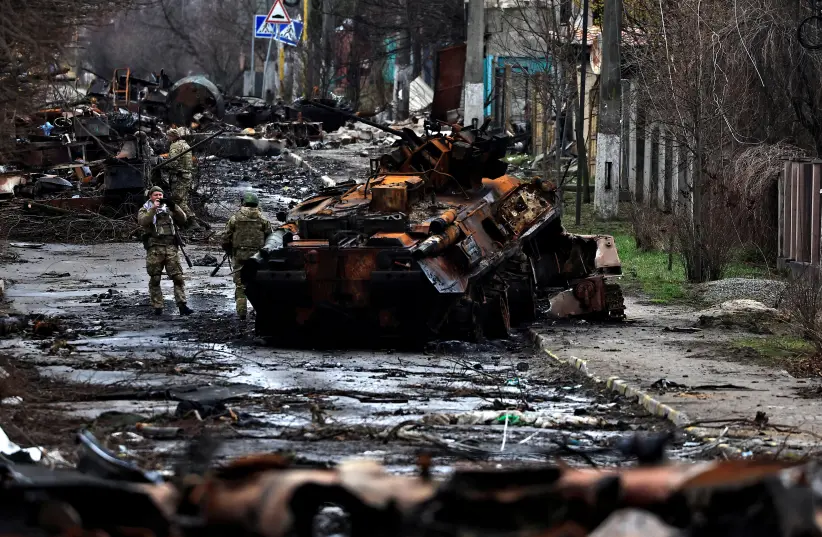
A soldier takes a photograph of his comrade as he poses beside a destroyed Russian tank and armoured vehicles, amid Russia’s invasion on Ukraine, in Bucha, in Kyiv region. Source: The Jerusalem Post.
V CONCLUSION
The Law of Armed Conflict is a paramount regulatory mechanism with a demonstrable impact on the conduct of nation-states engaged in armed conflict. The International Criminal Court and United Nations military tribunals, though imperfect, are a necessary apparatus for prosecuting individuals accused of violating the LOAC.
Written By Anthony Avice Du Buisson (01/11/2022)
+Reference List
[1] Attorney-General’s Department, International Law (Government Web Page) <https://www.ag.gov.au/international-relations/international-law>.
[2] International Committee of the Red Cross (ICRC), War and International Humanitarian Law (Web Page, 29 October 2010) <www.icrc.org/eng/war-and-law/overview-war-and-law.htm>.
[3] World YMCA, YMCA Historical Figures (Web Page) < https://www.ymca.int/about-us/ymca-history/ymca-historical-figures/>.
[4] ICRC, ‘What is International Humanitarian Law?’, Advisory Service on International Humanitarian Law (Webpage, July 2004) <https://www.icrc.org/en/doc/assets/files/other/what_is_ihl.pdf>.
[5] Victoria University of Wellington, ‘The Red Cross And the Geneva Conventions – 60 Years On’ (2010) 41(113) Victoria University of Wellington Law Review 113, 115.
[6] Cornell Law School, ‘Geneva Conventions and their Additional Protocols’, Legal Information Institute (Webpage, 2019) <https://www.law.cornell.edu/wex/geneva_conventions>.
[7] ICRC, ‘The Geneva Conventions of 1949 and their Additional Protocols’, ICRC (Webpage, 29 October 2010) <https://www.icrc.org/en/doc/war-and-law/treaties-customary-law/geneva-conventions/overview-geneva-conventions.htm>.
[8] Ibid.
[9] ICRC, (n7).
[10] Ibid.
[11] Cornell Law School, (n6).
[12] Ibid.
[13] ICRC, ‘What is International Humanitarian Law?’, Advisory Service on International Humanitarian Law (Webpage, July 2004) <https://www.icrc.org/en/doc/assets/files/other/what_is_ihl.pdf>fi D Treaties Biological Weapons Convention, open for signature 10 April 1972, UNGA (Entered into force 26 March 1975); Optional Protocol to the Convention on the Rights of the Child on the involvement of children in armed conflict, open for signature 25 May 2000, UNHR (entered into force 12 February 2002).
[14] Ibid.
[15] Victoria University of Wellington, (n5).
[16] Jonathan Allen CMG, ‘Statement by Ambassador Jonathan Allen, UK Deputy Permanent Representative to UN, at the Security Council briefing on International Humanitarian Law’, International Humanitarian Law: We lack enforcement and accountability (Government Transcript, 1 April 2019) <https://www.gov.uk/government/speeches/international-humanitarian-law-we-lack-enforcement-and-accountability>.
[17] United Nations Refugee Agency, People Forced to Flee: History, Change and Challenge (Oxford Press, 2022) 193.
[18] Ibid.
[19] Marko Milanović, ‘The Impact of the ICTY on the Former Yugoslavia: An Anticipatory Postmortem.’ (2016) 110(2) The American Journal of International Law 233, 243-247.
[20] Daniel Williams, ‘Srebrenica Video Vindicates Long Pursuit by Serb Activist’, The Washington Post (online, 25 June 2005) < https://www.washingtonpost.com/wp-dyn/content/article/2005/06/24/AR2005062401501_pf.html>.
[21] Ibid.
[22] Anna Holligan, ‘Srebrenica massacre: Dutch state ‘10% liable’ for 350 deaths’, BBC (online, 19 July 2019) <https://www.bbc.com/news/world-europe-49042372>.
[23] Sidita Kushi, ‘Regional bias too obvious in western response to humanitarian atrocities’, Euractiv (online, 27 September 2022) <https://www.euractiv.com/section/global-europe/opinion/regional-bias-too-obvious-in-western-response-to-humanitarian-atrocities/>.
[24] Peter Maurer, ‘Challenges to international humanitarian law: Israel’s occupation policy’ (2012) 94(888) 1503 International Review of the Red Cross 1503, 1506-1508.
[25] Rodrigo Campos, ‘U.S. vetoes U.N. resolution denouncing violence against Palestinians’, Reuters (online, 2 June 2018) <https://www.reuters.com/article/us-israel-palestine-un-vote-idUSKCN1IX5UW>.
[26] ICRC, ‘Amnesties and International Humanitarian Law: Purpose and Scope’, Advisory Service on International Humanitarian Law (Web page, October 2017) <https://www.icrc.org/en/download/file/56882/170545_amnesties_factsheet_october_2017_clean_en.pdf>.
[27] Ivo H. Daalder, ‘Decision to intervene: How the War in Bosnia Ended’, Brookings (online, 1 December 1998) <https://www.brookings.edu/articles/decision-to-intervene-how-the-war-in-bosnia-ended/>.
[28] Prosecutor v Slobodan Milosevic (Decision on Assigned Counsel Request for Provisional Release) (International Criminal Tribunal for the Former Yugoslavia, Trial Chamber III, Case No IT-02-54-T, 23 February 2006).
[29] Alyssa K. Prokok and Benjamin J. Appel, ‘Compliance with International Humanitarian Law: Democratic Third Parties and Civilian Targeting in Interstate War’ (2014) 58(4) Journal of Conflict Resolution 713, 716-17.
[30] Ibid, 718.
[31] Journal of Conflict Resolution, (n29) 719.
[32] Ibid, 722.
[33] Journal of Conflict Resolution, (n29) 730.
[34] Ibid.
[35] Maya Khater, ‘The Legality of the Russian Military Operations Against Ukraine From the Perspective of International Law’ (2022) 113 3(1) Access to Justice in Eastern Europe 107, 112-13.
[36] NATO, ‘Kosovo Air Campaign (March-June 1999)’ Operation Allied Force (Web Page) <https://www.nato.int/cps/en/natohq/topics_49602.htm>.
[37] Gearóid Ó Tuathail and Carl Dahlman, ‘The Effort to Reverse Ethnic Cleansing in Bosnia-Herzegovina: The Limits of Returns’ (2004) 45(6) Eurasian Geography and Economics 439, 458.
[38] ICTY, ‘International Criminal Tribunal for the former Yugoslavia: 1993-2017’, United Nations International Criminal Tribunal for the former Yugoslavia (Web page) <https://www.icty.org/>.
[39] SC Res 827, UN Doc S/RES/827 (25 May 1993).
[40] ICTY, ‘Radovan Karadžić Case – Key information & Timeline’, United Nations International Criminal Tribunal for the former Yugoslavia (Web Page, 24 March 2016) <https://www.icty.org/en/cases/radovan-karadzic-trial-key-information>.

![Trouble in the South Pacific: The case of the Solomon Islands [JCU Essay]](https://philosophyismagic.com/wp-content/uploads/2021/09/RAMSI-1-700x465.jpg)
![Rosette’s Heart – [Poem]](https://philosophyismagic.com/wp-content/uploads/2021/02/rosetta-nebula-1-700x465.jpg)
![A symphony of violence in Afghanistan [Medium Article]](https://philosophyismagic.com/wp-content/uploads/2021/08/1_bVzly9TuDCRBZ9aIV5GqnQ-700x465.jpeg)
